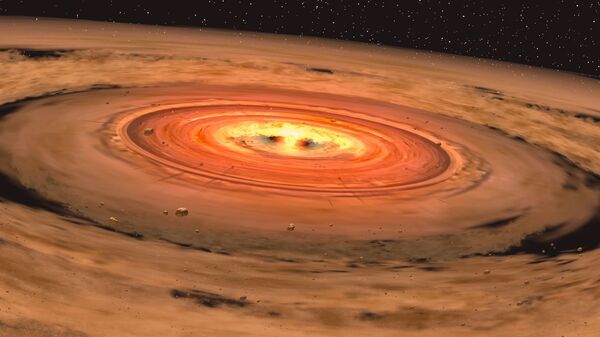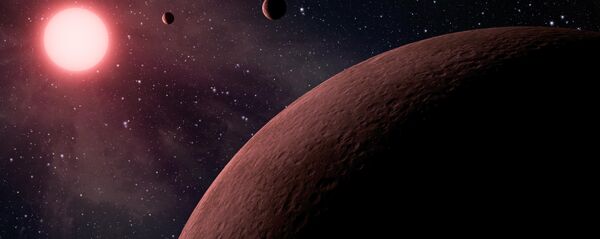A group of astronomers led by Diez Alonso from the Spanish University of Oviedo closely looked at data from the Kepler telescope and found two new planetary systems and three Earth-size planets, according to an article published in the scientific journal Monthly Notices of the Royal Astronomical Society.
The researchers discovered that one system was 160 light years away from the sun; it presumably comprises at least three rocky planets, with their radii approximating that of Earth, and their mass equaling 1.4, 0.9, and 1.3 of Earth’s mass, respectively. The celestial bodies move around a red dwarf with orbital periods of 5.24, 7.78 and 10.1 days. The star’s effective temperature is estimated at 3,450 Kelvin degrees, which is nearly one and a half times less than that of the sun.
Central to the second planetary system is another red dwarf, with an effective temperature of 3,800 Kelvin degrees, which is even less suited for life. Remarkably, two super-Earths spin around it, both twice as large as Earth, and five times as heavy. It takes them six and 20 days, respectively, to make a complete revolution around the star.
In years to come, researchers are planning to closely examine their atmospheric features, as well as determine their composition, however, according to preliminary data the planets are too hot to sustain already known life forms.
READ MORE: A New Species? Kids Born on Mars May Differ From Us
Interestingly, TRAPPIST-1, which is nestled in the constellation of Aquarius roughly 39.5 light years away from the sun, is considered to comprise the highest number of Earth-like planets. A total of seven Earth-size planets were found there, three of which are in the so-dubbed "habitable zone."
Launched in March 2009, Kepler is NASA's flagship spacecraft to map Earth-size planets in the Goldilocks habitable zone of other stars.
5 years ago this week Kepler discovered a treasure trove of small, habitable zone worlds. We know these planets are out there. Can’t wait to see what @NASA_TESS finds once it reaches science orbit. #ThrowbackThursday https://t.co/7dDyv10vWH pic.twitter.com/9c5ZMAbZI5
— NASA Kepler and K2 (@NASAKepler) 19 апреля 2018 г.
Memorial Day weekend is almost here… and the chance to take a virtual trip 492 light years away to Kepler-186f, and Earth-size planet orbiting a small, red star. https://t.co/xBbZp1OhEF pic.twitter.com/LAcjnM9GWx
— NASA Kepler and K2 (@NASAKepler) 25 мая 2018 г.



